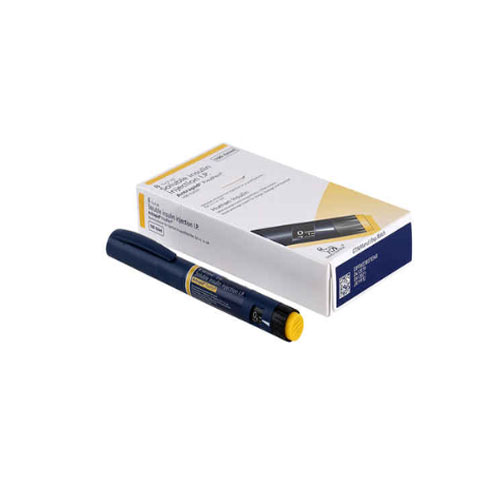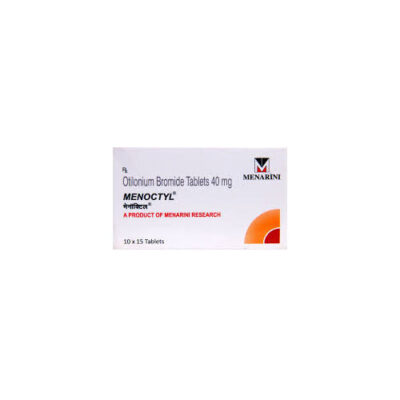Description
INTRODUCTION ABOUT ACTRAPID FLEXPEN 100IU
ACTRAPID FLEXPEN 100IU contains Human Insulin which belongs to the group of medicines called Antidiabetic agents. It improves glycemic control in patients with diabetes mellitus (both type I and type II). It helps your body to make utilize of the circulating blood glucose by transporting the circulating glucose from the blood into the muscles and fat tissues.
Talk to your doctor before starting therapy with ACTRAPID FLEXPEN 100IU if you have any liver, kidney or heart problems. You must also inform your doctor if you have a history of stroke, any infection in the recent days, perform intense exercise or planning to go abroad (as the mealtime and injection timings may vary) as a precaution.
Do not use this medicine if you have hypoglycemia (low blood sugar levels). Consult your doctor before using this medicine if you are pregnant or breastfeeding. Along with the management, carefully follow the instructions given by your doctor regarding the mealtime and exercise (such as how often and how much to do).
Carefully follow the instructions given by the doctor in case of self-administration. Do not mix or change your insulin unless your doctor tells you to do so.
The most common side effects of receiving ACTRAPID FLEXPEN 100IU are low blood sugar levels, pain, redness, itching, swelling or thickening at the injection site, lump formation under the skin and swelling of body parts. Consult your doctor if any of these side effect troubles you.
USES OF ACTRAPID FLEXPEN 100IU
- Improves glycaemic control in patients with diabetes mellitus (both type I and type II)
HOW ACTRAPID FLEXPEN 100IU WORKS
ACTRAPID FLEXPEN 100IU helps your body to make utilise of the circulating blood glucose. It helps in the transport of glucose from the blood into the muscles and fat tissues. It also stops the production of glucose by the liver. As a result, it controls blood sugar levels and improve glycemic control in patients with diabetes mellitus.
DIRECTIONS FOR USE
Use ACTRAPID FLEXPEN 100IU exactly as advised by your doctor.
For Injections: Injections (supplied as vials or ampoules) must be administered only a doctor or a nurse into the vein (intravenously) or beneath the skin (subcutaneously). Your doctor will decide correct dose, frequency of administration and the injection site depending upon your age, body weight and health condition.
For Pre-filled syringe or insulin pens:
Inject this medicine exactly as instructed by your doctor. It should be injected beneath the skin (subcutaneously). Carefully follow the instructions provided by your doctor if you are administering it by yourself.
- Prior to the administration, rotate the device well for 10 times between your palms and invert 10 times, until the liquid forms a uniform mixture
- Do not shake the medicine vigorously, as it may form a froth
- Insert a fresh needle before injection. Make sure that the medicine does not contain any lumps or air bubbles in it
- After injecting the medicine, remove the needle from the pen and dispose it immediately
- Do not share your needle or disposable pens or pre-filled syringe with anyone to avoid the risk of spreading infections
- Dispose the pen or pre-filled syringe, once it is empty
- Avoid repeatedly injecting the medicine at the same site to manage skin damage. Instead, the injection site should be rotated. Make sure to consult your doctor before changing the injection site as a precaution.
ACTRAPID FLEXPEN 100IU should not be mixed with any other insulins before use. Do not stop therapy with ACTRAPID FLEXPEN 100IU without consulting your doctor.
SIDE EFFECTS OF ACTRAPID FLEXPEN 100IU
COMMON
- Injection site reactions (such as pain, redness, itching or swelling)
- Lipodystrophy (shrinkage of fat tissues beneath the skin)
- Lumps under the skin
- Edema (swelling of face, hands and legs)
- Low blood sugar levels (signs include tiredness, hunger, nausea, headache, nervousness, cold sweats, fast heartbeat)
Consult your doctor immediately if you experience any of the following side effects:
- signs of heart failure (such as shortness of breath, chest pain, swelling of body parts, sudden weight gain)
- serious allergic reaction (such as hives, swelling of the face, lips, tongue or throat causing difficulty in breathing or swallowing
HOW TO MANAGE SIDE EFFECTS
Hypoglycemia
Managing hypoglycemia, or low blood sugar, involves prompt action to raise blood glucose levels and manage complications. When experiencing hypoglycemia, individuals should quickly consume a source of rapidly-absorbed carbohydrates, such as glucose tablets, fruit juice, or regular soda. Waiting for about 15 minutes and rechecking blood sugar levels is crucial to ensure they rise to a safe range. If hypoglycemia persists, additional carbohydrate intake may be necessary. Once blood sugar levels stabilize, a small snack containing both carbohydrates and protein can help sustain them. Regular monitoring and consultation with a healthcare professional are essential for developing a personalized plan to manage hypoglycemia effectively. In severe cases, emergency assistance may be required.
Injection Site Reactions
Managing injection site reactions is essential for individuals who regularly administer injections. To alleviate discomfort and minimize potential issues, it is crucial to follow proper injection techniques. Rotate injection sites to manage overuse of a single area, allowing tissues to heal. Use a clean, sterile needle and syringe for each injection. Apply an ice pack to the injection site before and after administration to reduce pain and swelling. If redness, swelling, or irritation persists, consult a healthcare professional for guidance. It is essential to report any severe or persistent reactions to ensure appropriate adjustments to the injection routine and to manage potential complications.






Reviews
There are no reviews yet.